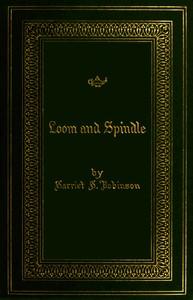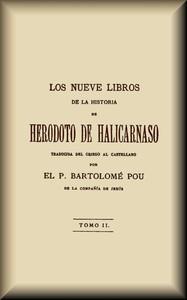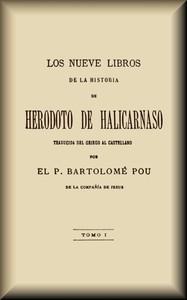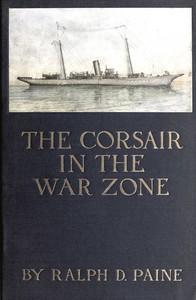|
|
Read this ebook for free! No credit card needed, absolutely nothing to pay.Words: 51501 in 15 pages
This is an ebook sharing website. You can read the uploaded ebooks for free here. No credit cards needed, nothing to pay. If you want to own a digital copy of the ebook, or want to read offline with your favorite ebook-reader, then you can choose to buy and download the ebook.

: Loom and spindle by Robinson Harriet Jane Hanson Wright Carroll D Carroll Davidson Author Of Introduction Etc Larcom Lucy Contributor - Women textile workers Massachusetts Lowell Biography; Factory system; Lowell offering; Lowell (Mass.) Social conditions@FreeBooksMon 08 Apr, 2024 INTRODUCTION iii LOOM AND SPINDLE. "That wonderful city of spindles and looms, And thousands of factory folk." The life of a people or of a class is best illustrated by its domestic scenes, or by character sketches of the men and women who form a part of it. The historian is a species of mental photographer of the life and times he attempts to portray; he can no more give the whole history of events than the artist can, in detail, bring a whole city into his picture. And so, in this record of a life that is past, I can give but incomplete views of that long-ago faded landscape, views taken on the spot. It is hardly possible to do this truthfully without bringing myself into the picture,--a solitary traveller revisiting the scenes of youth, and seeing with young eyes a city and a people living in almost Arcadian simplicity, at a time which, in view of the greatly changed conditions of factory labor, may well be called a lost Eden for that portion of our working-men and working-women. Before 1836 the era of mechanical industry in New England had hardly begun, the industrial life of its people was yet in its infancy, and nearly every article in domestic use that is now made by the help of machinery was then "done by hand." It was, with few exceptions, a rural population, and the material for clothing was grown on the home-farm, and spun and woven by the women. Even in comparatively wealthy families, the sons were sent to college in suits of homespun, cut and made by the village seamstress, and every household was a self-producing and self-sustaining community. "Homespun was their only wear," homespun their lives. There was neither railway, steamboat, telegraph, nor telephone, and direct communication was kept up by the lumbering stage-coach, or the slow-toiling canal, which tracked its sinuous way from town to city, and from State to State. The daily newspaper was almost unknown, and the "news of the day" was usually a week or so behind the times. Money was scarce, and most of the retail business was done by "barter"--so many eggs for a certain quantity of sugar, or so much butter or farm produce for tea, coffee, and other luxuries. The people had plenty to eat, for the land, though sterile, was well cultivated; but if the children wanted books, or a better education than the village school could give them, the farmer seldom had the means to gratify their wishes. These early New Englanders lived in pastoral simplicity. They were moral, religious, and perhaps content. They could say with truth,-- "We are the same things that our fathers have been, We see the same sights that our fathers have seen, We drink the same stream, we feel the same sun, And run the same course that our fathers have run." Their lives had kept pace for so many years with the stage-coach and the canal that they thought, no doubt, if they thought about it at all, that they should crawl along in this way forever. But into this life there came an element that was to open a new era in the activities of the country. These were teaching, needlework, keeping boarders, factory labor, type-setting, folding and stitching in book-binderies. According to the census of 1885 , wherein the subject of "Woman in Industry" was first specialized, by Hon. Carroll D. Wright, there are 113 industries, which, subdivided, make 17,357 separate occupations. Women have found employment in 4,467 of these, while of the 113 general branches, they are found in all but seven. The Middlesex Canal was one of the earliest factors in New England enterprise. It began its course at Charlestown Mill-pond, and ended it at Lowell. It was completed in 1804, at the cost of 0,000, and was the first canal in the United States to transport both passengers and merchandise. Its charter was extinguished in 1859, in spite of all opposition, by a decision of the Supreme Court. And thus, in less than sixty years, this marvel of engineering skill, as it was then considered, which was projected to last for all time, was "switched off the track" by its successful rival, the Boston and Lowell Railroad, and, with the stage-coach and the turnpike road became a thing of the past. Free books android app tbrJar TBR JAR Read Free books online gutenberg More posts by @FreeBooks
: Los nueve libros de la Historia (2 de 2) by Herodotus BCE BCE Pou I Puigserver Bartomeu Translator - History Ancient; Greece History To 146 B.C.@FreeBooksMon 08 Apr, 2024

: Los nueve libros de la Historia (1 de 2) by Herodotus BCE BCE Pou I Puigserver Bartomeu Translator - History Ancient; Greece History To 146 B.C.@FreeBooksMon 08 Apr, 2024
|
Terms of Use Stock Market News! © gutenberg.org.in2025 All Rights reserved.






